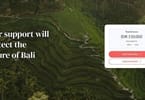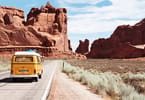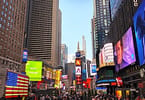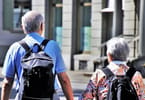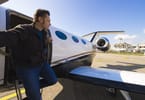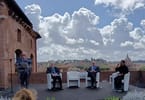The agitated official who wanted to know which train my guide and I were catching had teeth stained red by betel-nut juice. The look and habit were characteristics he shared with thousands of his compatriots. What distinguished him was his motorcycle helmet. On either side was a swastika, on the front the eagle of the Waffen SS. I was just raising my camera to take his picture when I thought better of it. In this country, it might not be wise.
Should tourists visit Burma?
The country was Burma, where there is currently a fad for military helmets, imported from China and worn in ignorance of what their insignia represent in the world outside. The Burmese are not encouraged by their masters to look beyond their borders.
Nor are we much encouraged by the travel trade to venture over theirs. Burma, or Myanmar (a local, formal name, the use of which the military regime has tried to make exclusive and compulsory), is a dictatorship. Only last week, the New York-based organisation Human Rights Watch reported that the number of political prisoners had doubled in the past two years; and Aung San Suu Kyi, the most famous detainee, was denied permission to appeal in person against the recent extension of her house arrest.
In Britain, organisations such as the Burma Campaign UK, Tourism Concern and Co-operative Travel argue that tourism aids the grasping generals. They cite a comment of Aung San Suu Kyi’s in a BBC interview in 2002: “We have not yet come to the point where we encourage people to come to Burma as tourists.”
As Telegraph Travel reported last month, Aung San Suu Kyi is said to have changed her mind. Through a former member of her party, the National League for Democracy, she has let it be known that she believes that private-sector tourism might be a good thing, both for her hard-up people and their battened-down country. Shortly after our report appeared, a party of tourists, customers of the Ultimate Travel Company, was due to leave London to cruise the Irrawaddy, the great river that flows north to south and cuts the country in two. I joined it for the first week.
In the picturesquely dilapidated southern city of Rangoon (Yangon) – which the generals abandoned as a capital in 2005 for Nay Pyi Taw, a Burmese LA-in-the-bush 370 miles north – our base was the Governor’s Residence, a property owned, like our ship, by Orient-Express. Every stick of furniture, and the sticks that fastened the club sandwiches served by the pool, seemed to be made of teak. Having arrived out of a clear sky, we were soon being treated to the lovely percussion of monsoon rain on a roof.
Most of my fellow guests were well over 50 and well-travelled; some recalled a previous trip with the Ultimate Travel Company to Burma as “one of the best holidays we have had”. Among them were accountants, an architect, a doctor, a retired diplomat; several for whom travel was not only a pleasure but a business. Among them, too, was 86-year-old Ray Shaw, who during his penultimate visit, at 22, was strafing Japanese troop convoys from the cockpit of a Hurricane. Ray told how, on his first return four years ago, he was shown round Fort Dufferin in Mandalay – built by the British, occupied by the Japanese, then attacked by the British: “The inside was totally destroyed. I didn’t like to tell them I’d helped to do it.”
Had any of them had qualms about visiting Burma? One man said: “I never believe anything I read in the papers.” An elderly woman said she thought the army had “done a good job here.” But they were unusual; most had dithered. A Scottish couple, among the youngest, said they had been urged by a Burmese acquaintance to “go and see for yourselves”.
Chris Caldicott, a photographer and cook besotted with Burma and its graciously hospitable people, was on his tenth trip. All the Burmese he had spoken to feared the growing dominance of China, and were anxious to maintain contact with the world beyond. “Seeing visitors from the West makes them feel less isolated, vulnerable and forgotten,” he said. His wife, however, refuses to go with him.
Even on the journey in from the airport he had noticed developments since his last visit two years ago: a few supermarkets and air-conditioned malls, and a few more young people sporting jeans rather than the unisex sarong called a longyi. They remain a minority for, as San, one of our genial guides, demonstrated, the longyi is an infinitely flexible garment, worn long on formal occasions, rolled up into shorts for football, quickly twisted at the front to make a pocket for coins or keys, and doubling up at night as a blanket.
Monsoon showers and slippery marble paving did nothing to diminish the impact of the Shwedagon Paya, the most sacred Buddhist site in the country. We had hours, but it would repay days of exploration. Its central stupa, a solid cone covered in gold plate and gold leaf, can be seen from almost anywhere in Rangoon. At close quarters, the stupa is merely the maypole around which a world revolves: a world of countless smaller temples, pagodas, pavilions and shrines, infinitely varied in shape, colour and style. The faithful are equally resistant to stereotypes. I saw one monk using a digital camera, another murmuring into a mobile phone.
The scale of the Chaukhtatgyi Buddha, a reclining figure 216 feet long in a metal-roofed shed, was also impressive. The story of how it had replaced an original standing image that had fallen into ruin was told, in English, on a plaque “Donated by HMWE Plastic Bag Family”. Close to the Buddha’s great pink feet was a shrine to Ma Thay, a holy man who has the power, it is said, to grant sailors a safe journey. Someone, maybe, sought his intercession on our behalf, for our voyage was a smooth one.
We boarded the Road to Mandalay in the city of Mandalay, having flown north from Rangoon to its “International Airport” – from which the only international flight is to Yunnan, in China. We saw her first from on high, from the hill above the
dreamy city of Sagaing, where every second building is a stupa, a monastery or a nunnery.
The ship, built to cruise the Rhine, had been sailing the Irrawaddy for 13 years when she was walloped in May last year by Cyclone Nargis (a storm that killed almost 140,000 people and left more than two million homeless. While the junta was blocking international relief, British tourists who had visited in previous years responded to an appeal and raised more than £300,000). She had been more or less rebuilt, the work led by a team from Southampton, who were still tweaking our cabins hours before we turned the keys in their doors.
Those cabins were well appointed, with a teak bed and desk, a jade-tiled shower cubicle and a flat-screen TV. Accustomed now to going without hi-tech toys – Western mobile phones do not work in Burma – few of us lingered in front of the screen: the Irrawaddy was entertainment enough.
Early in the morning, with the sun turning the muddy banks red and the rice paddies a shimmering green, there would be families – father, mother and child – out fishing near the shore in canoes. Beyond them were settlements of stilted houses, too poor, it seemed, to have possibly funded the grand pagodas and temples that poked through the trees behind them, trees that ran away into mist-shrouded mountains.
Later, closer to, there would be a couple of men on a raft with a tent in the middle, like clubbable Crusoes on a bamboo island. There were bigger rafts, too, of teak logs lashed together, and many more logs, out of sight, below the surface. There were smoke-belching ferries, their lower decks crammed with drums of oil and bags of rice, their upper railings leant on by passengers, watching us watching them, and always waving.
More professional watchers surrounded our jovial Captain, Myo Lwin, on the bridge: officers who had all grown up on the river. Here, where water levels could change so quickly, especially at the tail end of the monsoon season, instruments were useless, experience everything. “When I was at sea,” the captain said, “I never had less than three feet of water under the keel. Six inches is very precious to me now.”
Visitors help to pay his wages, so he was predictably in favour of tourism. He also argued forcefully against sanctions. “They have had no effect,” he said. “Instead of proposing more sanctions, come to our country, work together. Of course, we’ve got a military government, but the villagers are not in the military. If Europe wants to help, come and give to the villagers. That will be more effective, I think, than shouting from over there.”
He, Orient-Express and the Ultimate Travel Company practise what he preaches. The launches that took us to and from shore called before the ship at villages to drop off books, pens and pencils. Following in their wake, we would see parents and children gathered on the banks to wave and shout their thanks. In theory, education is free; in practice, parents and teachers have to dip into their own pockets to pay even for chairs and desks. The UN estimates that the cyclone destroyed 4,000 schools in the Irrawaddy delta.
Our first port of call, Mingun, was a place of superlatives: the brick-built, quake-damaged Mingun Paya, which, had it been finished, would have been the biggest pagoda in the world; the largest uncracked bell in the world; and, close on our heels as we marvelled at both, what one couple called “the cutest but most persistent touts since Cuba”.
The village of Nwe Nyein, only 40 miles upriver, could not have been more different. Clay pots, originally for water and oil, more recently used to frame the door jambs of smart hotels, have been made there for hundreds of years. Quietly spoken elders showed us round every step from the sculpting of the base to the lighting of the kiln. The children, many of whom had never seen a digital camera, giggled at their images and tugged at friends to join them in the next picture.
When someone in our group accidentally elbowed a dent in a freshly thrown pot, the rest of us were mortified. One of the potters, smiling broadly, moved behind us. With one hand each side of the pot, he punched and patted it smooth again, as quickly as we would have popped a dimple in a water bottle.
At the village of Kyan Hnyat, we called at a school ourselves. Arriving in a downpour, we were doubly welcome, for they had been awaiting the rains for a month. As we climbed the bank, paths turned to streams. Brollies had been issued and some had anoraks, but no one stayed dry. The greeting from teachers and children, the former clasping hands, the latter bouncing in front of cameras, was more than compensation. I have never seen so many people – locals and visitors – smile so much while getting drenched.
The rain stopped in time for assembly. From the first-floor veranda of a timber classroom block we watched as the pupils lined up in forms on the green below, youngest on our left, oldest on our right, to honour the flag and belt out the national anthem. When we got back on the ship, many went straight to reception to make a donation to the school’s funds.
Returning from one of these heart-warming excursions, I heard someone musing, “Are they happier than us, do you think . . .?” Perhaps she should have been asking the ship’s outfitters from Southampton, four of whom were still on board. They were better placed to judge.
They said they felt privileged to have worked alongside Burmese craftsmen (“and”, jokingly, “with all that teak”). But they had seen sides of Burma we would never brush against on our five-star midstream passage up the Irrawaddy.
One had come upon a chain gang at work on a riverside road in Mandalay. He noted that they were fed and given a break. He also noted that they were watched constantly by two “spotters”. “Somehow, one of the poor buggers managed to make a break for it. He didn’t get far. They caught him and beat the **** out of him with bamboo canes. Blood all over the place. Then they beat the **** out of the spotter for not raising the alarm.”
As tourists, we experienced the frisson of dictatorship without any of the fear. For us the lorry clad with grey overlapping riot shields, a scaly reptile on wheels, was just another novelty in city traffic, like the lights at junctions with numbers, counting down the seconds in red before “go” and then in green before “stop”. But only the dumbest among us could have failed to register that the locals, at times, were telling us things that could have landed them in jail.
In Rangoon there is a stupa, the Maha Wizaya, to whose construction General Ne Win has contributed in the hope of great things in the next life. A man standing near it told me: “Nobody wants to have anything to do with him in the next life.”
Under Ne Win – who supposedly took a back seat after the murderous quashing of protest in 1988 – the military government was known as the State Law and Order Restoration Council – SLORC. Orwell might have made it up. He made up “Kyauktada”, which was the setting for his anti-imperial novel Burmese Days; but the inspiration for Kyauktada was Katha, where I left the ship to make my way back, via Mandalay, to Rangoon.
Katha’s market still deals in “brittle dried fish tied in bundles, crimson chillies, ducks split open and cured like hams”, as it did when Orwell was serving (as Eric Blair) in the colonial police. Rickshaws now have to compete with Chinese-made mopeds, many plastered with the crests of Manchester United, AC Milan and England, and from the DVD shop you can rent not only Burmese soaps but Tom and Jerry and West Life at Wembley. Yet the longyi endures, as does (there and throughout the country) the custom of painting faces with the sandalwood-like paste of thanakha.
I met a new guide, Thant Sin, who was quieter in style than his colleagues on the ship. Preoccupied, too, it seemed.
We made the rounds of Orwell-related sites: the forestry office, the old hospital, the jail (at a distance) and the house where Orwell himself had lived and which is now home to a local official. A red dirt path led through a jungly garden to a property of red brick and timber with a rusting red roof. In the two main rooms on ground and first floor, everything had been pushed up against the walls, as if to clear the floor for a party. There was nothing, anywhere, to suggest that one of the most famous names in literature had once written there.
Back at the riverside guesthouse where Thant Sin had spent the night, I realised why he had seemed preoccupied: he was still trying to secure us seats on the train that evening to Mandalay. The manager made telephone calls. Thant Sin was consulted; more calls were made. Another guest – an army officer, Thant Sin said – offered assistance. Attempts were being made, I gathered, to strike a balance between trains with comfortable seats and trains with any free seats at all – and, perhaps, to find out what this solitary foreigner was doing in Katha.
Having driven on the promise of one train to Naba station, about 14 miles west – where we encountered the immigration official in the Nazi helmet – we returned to Katha, arriving in time for a train that might or might not have been due at 4.30pm (I could no longer keep up). In the event, we boarded one five hours later.
Meanwhile there were diversions aplenty. Whole families were picknicking on tracks or platform. More people crammed four tea rooms, each screening a different programme: a football match, a pop show pairing singing with kick boxing, a shootout between Pierce Brosnan and Sean Bean, and a Burmese knock-off of Friends. The stationmaster, initially suspicious of my occasional scribbles in a notebook, warmed to me, offering to buy me a drink, then inviting me into his office – but not into the waiting room, with its coffee table and armchairs, which was reserved for VIPs and clearly little used. On one wall hung a pressed, short-sleeved white shirt; on another a photograph of Senior General Than Shwe, Chairman of the State Peace and Development Council.
Our carriage had worn leather seats with hard slatted wooden backs. Teenagers lay snoozing in the aisles. Thant Sin and I dozed and jerked awake, dozed and jerked awake, while a woman opposite, with a girl of about three, slept for much of the 12 hours. When the sun came up over endless miles of rice paddies and the child woke, the woman fed her, successively, curry and rice, hard-boiled quail’s eggs and a bag of peanuts. In Mandalay, we handed the mother an untouched cake and bananas we had bought for the journey. By now, that little girl will be as roly-poly as a Chinese Buddha.
Thant Sin was keen to show me the sights in the half-day I had before my flight back to Rangoon. Sleepy from the racketing train, sapped by heat and humidity, I followed him around the Kuthodaw Paya – known as the repository of the “biggest book in the world” for its 79 marble slabs on which are inscribed the sacred Buddha texts of the Tripitaka – and the Mahamuni Paya, where I joined the faithful in pressing gold leaf on to the swelling body of a famous image of the Buddha.
When he suggested a walk down “Marble Street”, where men chisel out religious images while young women wash and polish them, I was about to tell him I had had enough.
Then I remembered a comment made by a man in a village along the Irrawaddy when I asked him whether I could take his photograph. In most countries, his response would have suggested a simple lack of funds; in Burma it seemed to say much more. His words were: “I can’t travel, but my photograph will travel with you.”
BURMA BASICS
The Ultimate Travel Company (020 7386 4646; www.theultimatetravelcompany.co.uk ) can arrange a two-week tailor-made journey, taking in both classic temple cities and village life on the banks of the Irrawaddy, from £2,695 per person. Following two nights at the Governor’s Residence and a stay in the ancient capital of Bagan, you cruise the Irrawaddy to Mandalay on the Road to Mandalay. The next stop is Lake Inle, where long-tail boats are the only way to reach local villages and the extraordinary floating gardens. A final few relaxing days are spent on the pristine west coast beaches of Ngapali on the Bay of Bengal. The price includes international and internal flights, private transfers and guided sightseeing, breakfast in hotels and on board ship, all meals, soft drinks and beer.
FURTHER READING
From the Land of Green Ghosts by Pascal Khoo Thwe (Harper Perennial). The remarkable memoir of a hill tribesman who ended up at Cambridge University – by way of a rebel camp on the Burma-Thailand border.
The Trouser People by Andrew Marshall (Penguin). A journey in the footsteps of a bushwhacking Victorian scholar who brought football to Burma.
Letters from Burma by Aung San Suu Kyi (Penguin). Columns by the Nobel Peace Prize laureate, written in the 1990s for a Japanese newspaper, on subjects from politics to the tea room.
Myanmar (Burma), the most up-to-date guidebook (Lonely Planet).
BACKGROUND ON BURMA
Democratic Voice of Burma (www.dvb.no); Burma Campaign UK (www.burmacampaign.org.uk); Prospect Burma (www.prospectburma.org); Human Rights Watch (www.hrw.org); BBC (www.bbc.co.uk/topics/burma); The Irrawaddy magazine (www.irrawaddy.org); Tourism Concern (www.tourismconcern.org.uk).
WHAT TO TAKE AWAY FROM THIS ARTICLE:
- Shortly after our report appeared, a party of tourists, customers of the Ultimate Travel Company, was due to leave London to cruise the Irrawaddy, the great river that flows north to south and cuts the country in two.
- In the picturesquely dilapidated southern city of Rangoon (Yangon) – which the generals abandoned as a capital in 2005 for Nay Pyi Taw, a Burmese LA-in-the-bush 370 miles north – our base was the Governor's Residence, a property owned, like our ship, by Orient-Express.
- Through a former member of her party, the National League for Democracy, she has let it be known that she believes that private-sector tourism might be a good thing, both for her hard-up people and their battened-down country.



